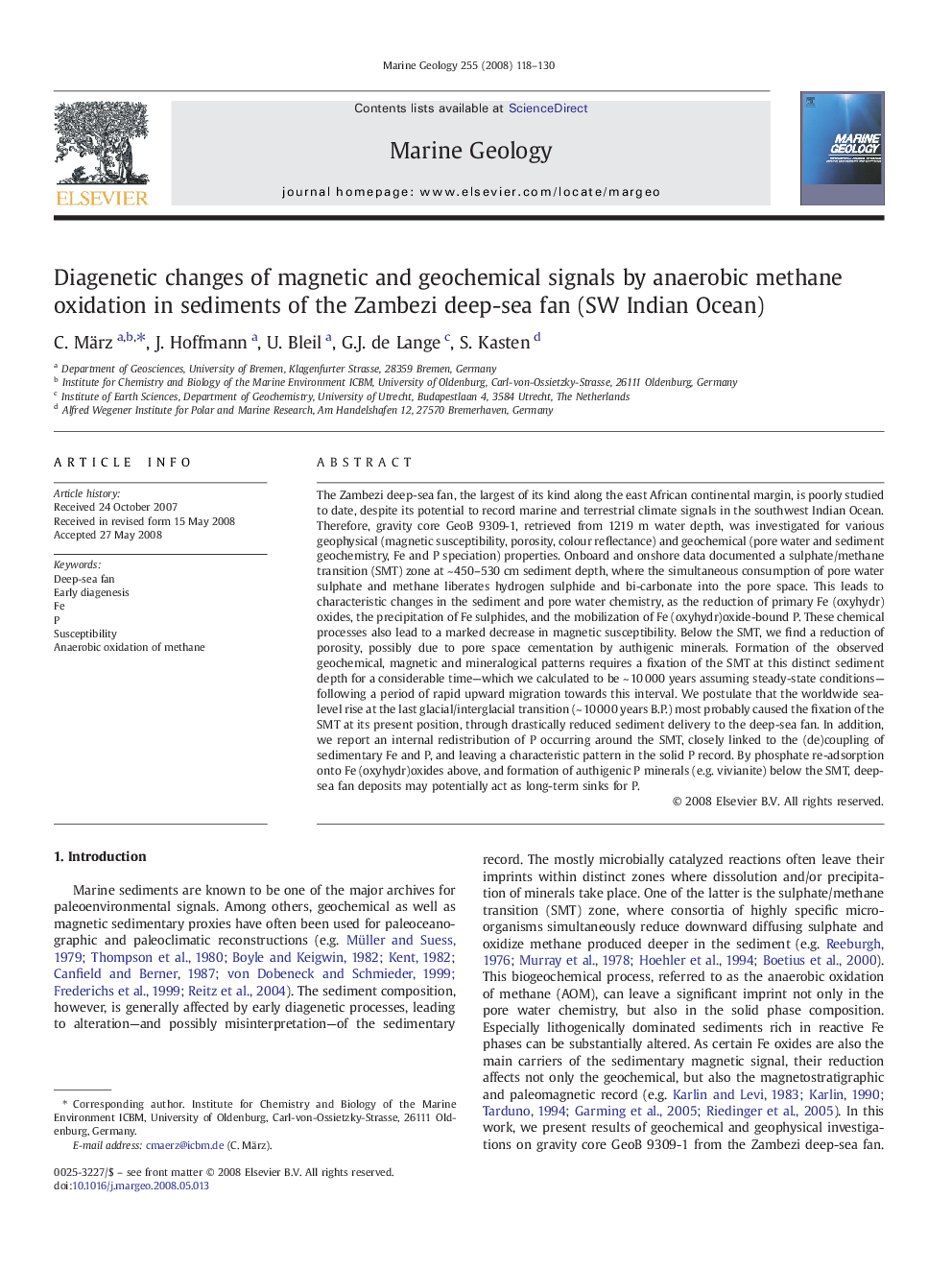| Article ID | Journal | Published Year | Pages | File Type |
|---|---|---|---|---|
| 4719251 | Marine Geology | 2008 | 13 Pages |
The Zambezi deep-sea fan, the largest of its kind along the east African continental margin, is poorly studied to date, despite its potential to record marine and terrestrial climate signals in the southwest Indian Ocean. Therefore, gravity core GeoB 9309-1, retrieved from 1219 m water depth, was investigated for various geophysical (magnetic susceptibility, porosity, colour reflectance) and geochemical (pore water and sediment geochemistry, Fe and P speciation) properties. Onboard and onshore data documented a sulphate/methane transition (SMT) zone at ~ 450–530 cm sediment depth, where the simultaneous consumption of pore water sulphate and methane liberates hydrogen sulphide and bi-carbonate into the pore space. This leads to characteristic changes in the sediment and pore water chemistry, as the reduction of primary Fe (oxyhydr)oxides, the precipitation of Fe sulphides, and the mobilization of Fe (oxyhydr)oxide-bound P. These chemical processes also lead to a marked decrease in magnetic susceptibility. Below the SMT, we find a reduction of porosity, possibly due to pore space cementation by authigenic minerals. Formation of the observed geochemical, magnetic and mineralogical patterns requires a fixation of the SMT at this distinct sediment depth for a considerable time—which we calculated to be ~ 10 000 years assuming steady-state conditions—following a period of rapid upward migration towards this interval. We postulate that the worldwide sea-level rise at the last glacial/interglacial transition (~ 10 000 years B.P.) most probably caused the fixation of the SMT at its present position, through drastically reduced sediment delivery to the deep-sea fan. In addition, we report an internal redistribution of P occurring around the SMT, closely linked to the (de)coupling of sedimentary Fe and P, and leaving a characteristic pattern in the solid P record. By phosphate re-adsorption onto Fe (oxyhydr)oxides above, and formation of authigenic P minerals (e.g. vivianite) below the SMT, deep-sea fan deposits may potentially act as long-term sinks for P.
